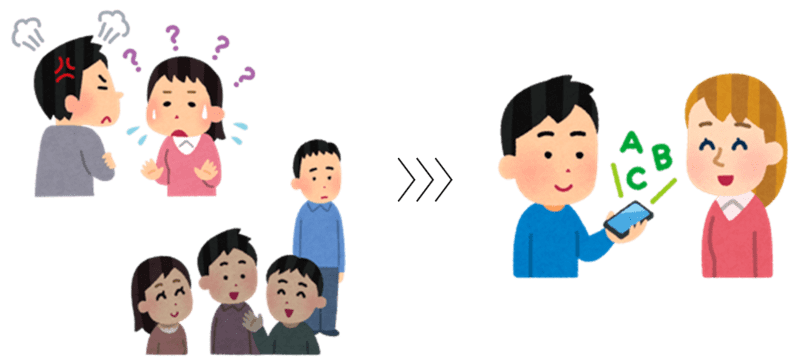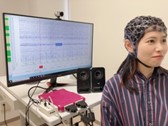Progress Report
Development of “Jizai Hon-yaku-ki (At-will Translator)” connecting various minds based on brain and body functions[4 and 5] Social implementation of Jizai Hon-yaku-ki (neurodiversity / education)
Progress until FY2024
1. Outline of the project
In R&D Items 4 and 5, we analyze and solve problems in Jizai Hon-yaku-ki implemented in the following two contexts. R&D item 4 focuses on using Jizai Hon-yaku-ki as supported communication, especially involving people with developmental conditions. While our R&D project is not dedicated specifically to disabled people, it may have the social benefit of improving our communication while respecting neurodiversity.
R&D item 5 addresses classroom use of Jizai Hon-yaku-ki for education. Along with the MEXT initiative to install up-to-date devices for students to utilize in their study, our R&D Item 5 aims at providing proof-of-concept cases of educational application.

Close engagement with the relevant parties (like those with developmental conditions, their supporters, children, and teachers) is necessary from the very beginning of our R&D. The common task of these two R&D items is to incorporate their viewpoints to make Jizai Hon-yaku-ki useful to them.
2. Outcome so far
- Identifying the features that should be implemented as a priority in "Jizai Hon-yaku-ki"
- Acquisition of physiological and behavioral data using an EEG and behavioral measurement system and identification of candidates for quantitative indices of mind
- Started research into the social implementation of "Jizai Hon-yaku-ki"
Outcome 1: Based on the opinions of people with disabilities and those around them obtained through a Delphi survey, we identified the elements and functions that should be prioritized for inclusion in Jizai Honyaku-ki. As a result of the analysis, we found that there was a high need for knowing one's own emotions and physical state and being able to communicate that to others. We shared these with the research and development team and have begun collaborating to develop elemental functions for social implementation.

Outcome 2: Using a system we have developed that simultaneously records EEG and multiple behavioral data with minimal burden, we have measured physiological and behavioral data from individuals with developmental disorders. Characteristic EEG patterns recorded from specific areas have been identified as candidates for quantitative indicators of the mind.

Outcome 3: In addition to promoting the development of a wide range of environments with a view to implementing the prototype of Jizai Hon-yaku-ki in society, we have begun demonstrations at specialized day care centers for autistic people and to individuals with autism in collaboration with Research Item 3. Based on feedback from participants, we will continue to select and implement useful elemental functions.
So far, we are engaging with potential users — especially those with developmental conditions — in various ways to lead our R&D better.
3. Future plans
We continue the ongoing engagement with users in every stage of our R&D, from basic research to trial and assessment of the products. Our R&D project also plans to build partnerships with educational sectors to proceed to trial implementations of Jizai Hon-yaku-ki for educational use. (Tokyo U: S. Kumagaya, Showa Medical U: M. Nakamura, Tohoku U: K.I. Tsutsui)